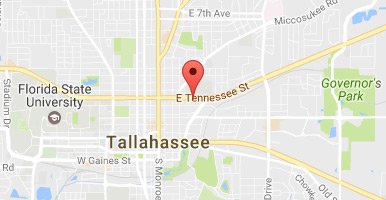- DUI
- Criminal Defense
- Florida DUI
- Traffic Offenses
- Drug Charges
- Marijuana Charges
- Violent Crimes
- Domestic Violence
- Temporary Injunctions
- Weapons Charges
- Theft Crimes
- White Collar Crime
- Juvenile Offenses
- Sex Crimes
- Violation of Probation
- Early Termination of Probation
- Seal or Expunge Criminal Record
- Criminal Appeals
- US Federal Offenses
- Misdemeanor Charges
- Felony Charges
- Co-Defendant Cases
- College Student Defense
- College Student Hearings
- FSU Students
- FAMU Students
- Florida Panhandle Arrests
- Extradition to Florida
- Bench Warrants / Warrants
- Emergency Bond Hearings
- Gambling Charges
- Drone Arrests
- Marsy’s Law
- UAS Infractions
- Introduction of Contraband
- Lying to Police
- Locations
- Case Results
- Our Firm
- Media
- Resources
- Blog
- Contact Us
The Fourth Amendment: An Overview of the Prohibition Against Unreasonable Searches and Seizures
June 26, 2021 Don Pumphrey, Jr. Criminal Defense Social Share
What Does the Fourth Amendment Protect Against?
The Fourth Amendment protects citizens against unreasonable searches and seizures perpetrated by the government. The general rule under the Fourth Amendment is that a search or arrest warrant and probable cause are required before a member of the government can lawfully search or seize an individual or their property. However, one or both of these requirements can be dispensed with depending on the situation presented.
When is the Fourth Amendment Violated?
In order to determine whether an individual’s Fourth Amendment rights have been violated, courts must first determine whether there is the existence of a Fourth Amendment claim. There is a Fourth Amendment claim when a search or seizure occurred.
What is a Search Under the Fourth Amendment?
Courts have two methods to determine whether a search has occurred under the Fourth Amendment:
What is the Trespass Doctrine?
Under the Trespass Doctrine, if a member of the government physically intrudes into a constitutionally protected area, a search has been conducted.[3] Most constitutionally protected areas are obvious: the inside of your home and your car. However, not all areas of the “home” receive the same protection. The home’s “curtilage” will be seen as constitutionally protected if a court finds the presence of enough Dunn factors.[4] These factors[5] include:
- proximity,
- enclosure,
- activity or use, and
- precautions to exclude others.
If a court finds enough of these factors met, then a home’s curtilage, or surrounding porch and yard areas, will receive constitutional protection. However, open fields and parts of the home not encompassed in the curtilage are not constitutionally protected from government invasion. Therefore, it is important to make clear through signage, a gate or fence, and activity, that certain areas adjacent to the home are not to be invaded without probable cause or a warrant.
What is the Reasonable Expectation of Privacy Test?
This test comes from Katz v. United States and looks at whether the government substantially impinged on the citizen’s actual subjective expectation of privacy, and whether that expectation is one that society is prepared to recognize as reasonable.[6] If both of these elements are met, the court will find that a search has been conducted under the Fourth Amendment.
When a Search Isn’t Really a Search
Some “searches” will not fall under the Fourth Amendment’s protection, and therefore, are not viewed by courts as bringing forth a constitutional claim. Examples of searches that are not considered to be “Fourth Amendment Searches” include:
- Police examining an object that is within “plain view”, meaning that it was apparent at the time the police saw it, and the police were in a place that they had a right to be in at the time of the view. To use this “Plain View Doctrine[7],” police must also have only viewed the object, and not seized it, and they must have had probable cause to view it.
- Dog sniffs are not considered to be searches by courts, and therefore, no reasonable suspicion of criminal activity, probable cause of illegal activity, or search warrant is required to conduct a dog sniff as long as the dog is in a place that they have a lawful right to be, and the conduct is proper.[8]
- Government employees may inspect containers, packages, lockers, or vehicle exteriors without the need for a warrant or probable cause, and such a search will not be considered the basis for a Fourth Amendment claim.[9]
What Will Happen if the Court Finds a Search Did Occur?
If the court finds that a search did occur giving rise to a Fourth Amendment claim, they must next analyze whether it was reasonable, or supported by probable cause or a valid warrant.
What is Probable Cause?
Probable cause[10] is a term to describe the facts and circumstances within an officer’s knowledge based on reasonably trustworthy information that supports a person of reasonable caution to believe that:
- For a search: An item subject to search or seizure would be found in the place to be searched at the time of the search, and
- For an arrest or seizure: An offense has been committed and the person detained is the person responsible.
If probable cause does not exist, the case will need to fall into an exception to the probable cause or warrant requirement.
What Is a Valid Warrant?
A warrant should exist before any member of the government conducts a search or seizure, subject to a few well-delineated exceptions. A valid warrant must be supported by probable cause, oath or affirmation, and particularly describe the place, persons, or things to be searched or seized. Additionally, the execution of the warrant also must be reasonable. If the search or seizure was properly covered by a valid warrant, there is no Fourth Amendment violation. But if the warrant was invalid or did not exist, there will need to be an exception to the warrant requirement present in order to avoid a constitutional transgression.
What are Exceptions to the Warrant or Probable Cause Requirement?
Some exceptions include:
- The Stop and Frisk.[11] This method is an exception to the warrant and probable cause requirement. In such situations, the police must still have a reasonable suspicion of the individual’s criminal activity based on objective articulable facts, and the search must be limited to a frisk or pat down of the individual’s outer clothing in an attempt to discover whether a weapon is present.
- The Administrative Search.[12] This exception requires a balancing test of the individual’s interest in privacy against the government’s interest in advancing the object of the search. They are presumed reasonable because the purpose of administrative searches are not traditional law enforcement purposes, and their scope is limited. These searches require a standardized procedure to regulate or limit the discretion of the law enforcement officers and subjective intent is considered when determining whether the search was conducted for non-investigative reasons. Examples of administrative searches include vehicle checkpoint searches and strip searches.
- The Inventory Search.[13] This exception applies to cars and arrested persons. For cars, there must be a lawful impoundment and the search must be of a routine nature. The government may search all readily accessible areas of the car. For arrested persons, there must be a lawful arrest, the arrestee is going to jail, and the standard department procedures are followed. The scope of inventory searches for arrested persons includes any article in the arrested person’s possession.
- The Consent Search.[14] This exception is fairly self-explanatory and applies in situations where the person being searched or in charge of the property gives their consent for the government to conduct a search. The government must prove by a preponderance of the evidence that, based on the totality of the circumstances, a reasonable person would believe that the person giving consent possessed actual authority to give consent.
What are Exceptions to the Warrant Requirement?
- The above requirements are exceptions to the Probable Cause requirement as well as the Warrant requirement:
- The Stop and Frisk, Administrative Search, and Consent.
- The Search Incident to Arrest.[15] This exception states that law enforcement officers may conduct a warrantless search as long as the search is incident to a constitutionally valid arrest, the search incident was right around the time of the arrest and was confined to the immediate vicinity of the arrest. For homes, with only an arrest warrant, the government agents may only search the arrested person’s area within their immediate control. For vehicles, the government agent can search the passenger compartment and the containers therein of the car if the arrested person is unsecured and within reaching distance of the passenger compartment at the time of the search or if there is the reasonable belief that evidence relevant to the crime of arrest may be found in the vehicle. For vehicle searches incident to arrest, reasonable belief, not probable cause, is the requirement.
- The Automobile Search.[16] Under this exception, once police have probable cause to believe that there is evidence of a crime in a vehicle, they may search the vehicle even without a warrant or consent. The scope of the vehicle search is limited to places in which there is probable cause to believe that the object of the search may be found. If the officers discover a container in the vehicle as part of their search that could hold the object of the search, then the officers may search those containers.
- Hot Pursuit.[17] This exception allows officers to search private spaces for fleeing felons and weapons until the suspect is apprehended or it is clear that the suspect is not in the home.
- Exigent Circumstances.[18] Under this exception, there must be an exigent circumstance and time constraints present that make getting a warrant impracticable for law enforcement. Generally, police must reasonably believe that the criminal evidence will be destroyed, or the suspect will avoid apprehension, if they take the time to seek a warrant. The exigency should restrict the scope of the resulting search, and the government needs probable cause that evidence of a crime will be found in the place to be searched. This exception does not apply when the law enforcement officer created the exigency by engaging or threatening to engage in conduct that violates the Fourth Amendment.
What is a Seizure under the Fourth Amendment?
When a Fourth Amendment claim based upon an illegal seizure comes before the court, they must first analyze what constitutes a seizure. The court looks to the totality of the circumstances and whether a reasonable person would not feel free to decline the officer’s request and terminate the encounter. There must be a physical application of force or submission by the seized person to the show of force in order for the court to find that a seizure occurred. A warrant is required to seize or arrest a person in their own home. However, there are exceptions to the warrant requirement in terms of seizures or arrests. These include:
- Public Arrest.[19]
- Investigatory Detentions. An example is a Terry stop (see Stop and Frisk above). These seizures are permissible if based on a reasonable suspicion and supported by articulable facts. The reasonable suspicion is determined by a totality of the circumstances, and the officers must act in a diligent and reasonable manner in confirming or dispelling their suspicions.
What is the Remedy for a Fourth Amendment Violation?
In order to remedy the violation of an individual’s Fourth Amendment rights, the Exclusionary Rule will be applied.[20] Under this rule, evidence obtained in violation of the Fourth Amendment is inadmissible at the trial of the person who was subject to the illegal search or seizure. The Exclusionary Rule does not apply in civil proceedings, grand jury proceedings, preliminary hearings, sentencings, deportation proceedings, or instances of impeaching the defendant during trial. Additionally, the Exclusionary Rule applies only if appreciable deterrence will result, the benefits of the deterrence outweigh the cost of suppression, and the police conduct is sufficiently culpable that such deterrence is worth the price paid by the justice system. When the Exclusionary Rule does apply, it applies also to secondary evidence. This is referred to as the “Fruit of the Poisonous Tree Doctrine,” which states that evidence derived from excluded evidence will also be excluded. However, if the deterrent effect on police misconduct is outweighed by the cost of excluding probative evidence, the evidence will likely be admissible. However, there are some exceptions to the fruit of the poisonous tree doctrine. These include:
- The Independent Source Doctrine.[21] This states that evidence will be admissible if the prosecution can show that it was obtained from a source independent of the original constitutionally illegal search or seizure.
- The Inevitable Discovery Doctrine.[22] This states that evidence linked to earlier illegal government action is admissible if the prosecutor proves by a preponderance of the evidence that the obtained materials ultimately or inevitably would have been discovered by lawful means.
- The Attenuated Connection Principle.[23] This states that, if the length of time between the initial illegal act by the government and the finding of the evidence is long enough, the flagrancy of the misconduct wasn’t great, there were intervening events, and the evidence was obtained of the defendant’s free will, then the taint of the original violation is sufficiently removed to make the evidence admissible.
- The Good Faith Reliance Principle.[24] This states that, if the officer acted in good faith reliance on a defective search warrant, then the fruits of that search will likely be admissible.
This article was written by Gabi D’Esposito
[1] Olmstead v. United States, 277 U.S. 438 (1928).
[2] Katz v. United States, 389 U.S. 349 (1967).
[3] Olmstead, 277 U.S. at 466.
[4] United States v. Dunn, 480 U.S. 294 (1987).
[5] Id.
[6] Katz, 389 U.S. at 349.
[7] Coolidge v. New Hampshire, 403 U.S. 443 (1971).
[8] Dog Sniff Inspection, Cornell Law School, available at: https://www.law.cornell.edu/wex/dog_sniff_inspection#:~:text=Dog%2Dsniff%20inspection%20of%20items,and%20the%20conduct%20is%20proper..
[9] Id.
[10] Probable Cause, Cornell Law School, available at: https://www.law.cornell.edu/wex/probable_cause.
[11] Terry v. Ohio, 392 U.S. 1 (1968).
[12] Kevin I. MacKenzie, Administrative Searches and the Fourth Amendment: An Alternative to the Warrant Requirement, 64 Cornell L.Rev. 5 (1979).
[13] Bryan R. Lemons, Searching a Vehicle Without a Warrant, Federal Law Enforcement Training Centers.
[14] Valid Searches and Seizures Without Warrants, Cornell Law School, available at: https://www.law.cornell.edu/constitution-conan/amendment-4/valid-searches-and-seizures-without-warrants.
[15] Search Incident to Arrest, Cornell Law School, available at: https://www.law.cornell.edu/constitution-conan/amendment-4/search-incident-to-arrest.
[16] Supra note 13.
[17] United States v. Santana, 427 U.S. 38 (1976).
[18] United States v. Curry, 937 F.3d 363 (4th Cir. 2019).
[19] United States v. Watson, 423 U.S. 411 (1976).
[20] Mapp v. Ohio, 367 U.S. 643 (1961).
[21] Nix v. Williams, 467 U.S. 431 (1984).
[22] Id.
[23] Utah v. Strieff, 579 U.S. __ (2016).
[24] Id.











